10 Wild Hearts tips and tricks to topple all titanic terrors
Our guide to Wild Hearts will help you become an unrivalled monster hu- er, I mean, Kemono hunter.
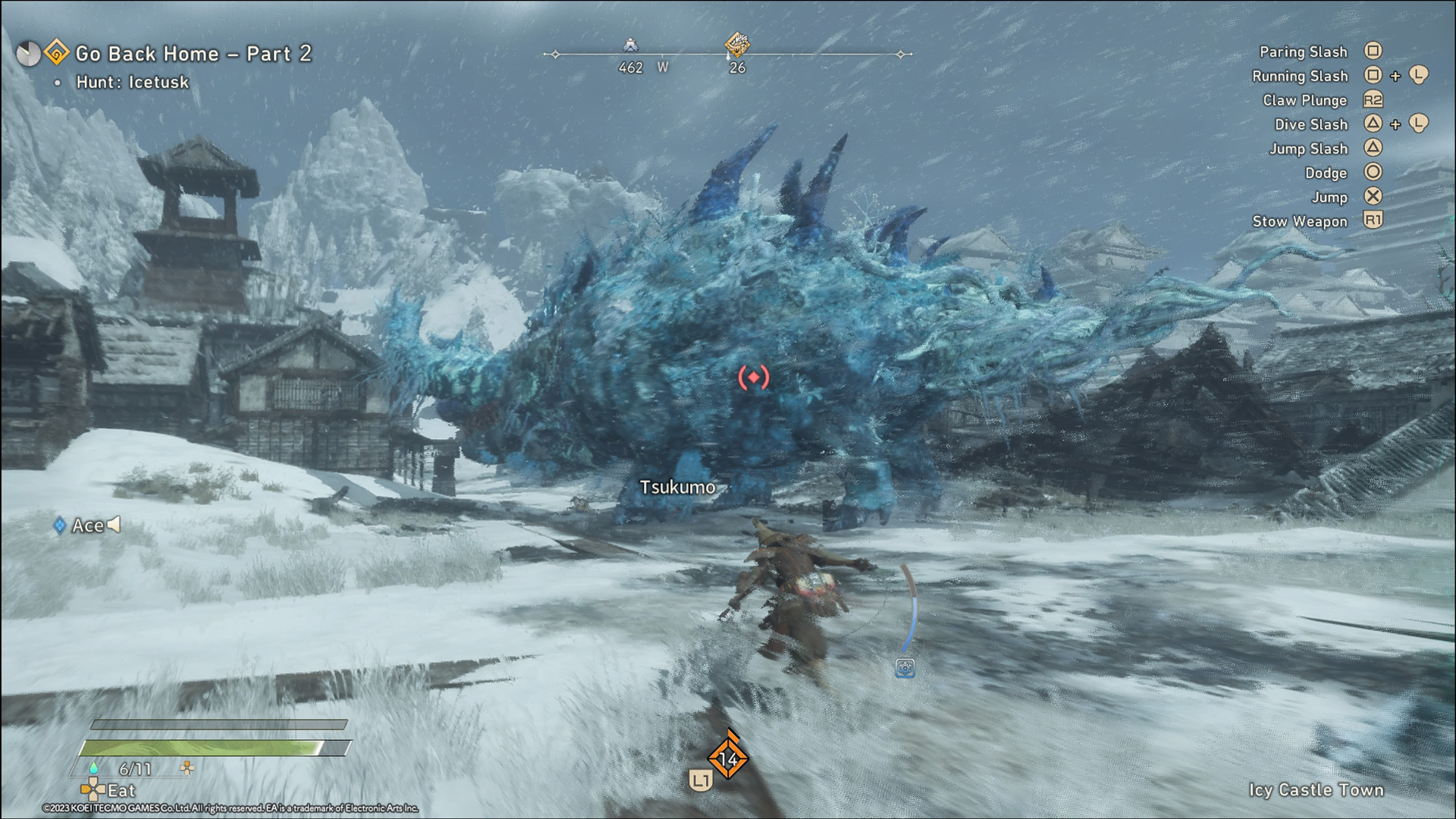
These Wild Hearts tips and tricks will help players get started, explaining weapons, tactics, Karakuri and gameplay extras. Though probably easier to get into than other monster hunting games, the names of which currently escape me, Wild Hearts can still be a little obscure or intimidating to newcomers - and we're here to help with that. Read on for a carefully curated selection of Wild Hearts tips and tricks to get you into the fray and taking down monsters much bigger than yourself.
1. Build Tents at Camps for cheaper, permanent fast travel points
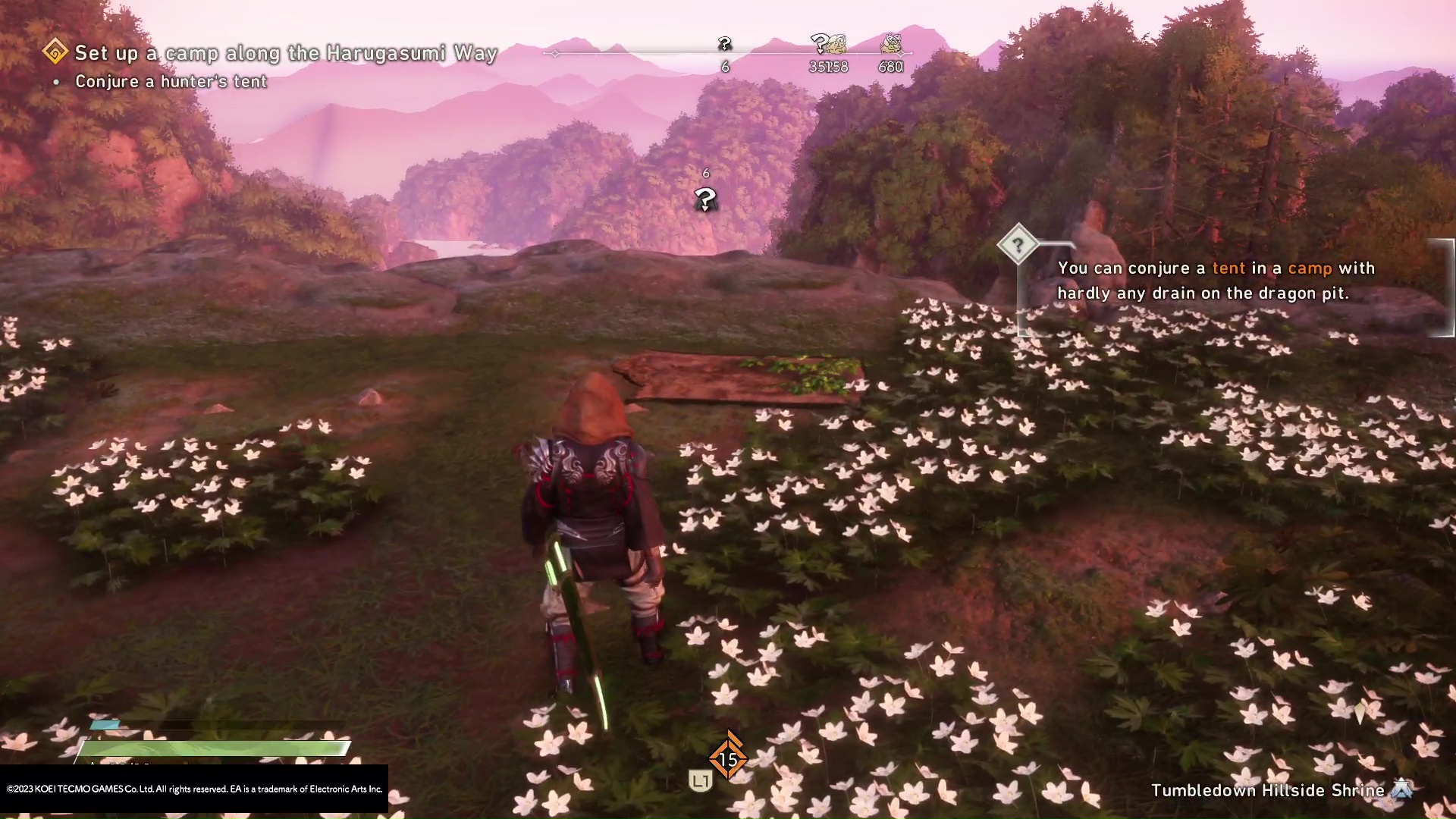
Wild Hearts' levels are large and sprawling, and early on travel can be a little bit of a slog. Building Tents allows you to fast travel, but they cost a lot of resources from your Dragon Pit. However, if you can find "Camps" - special, semi-hidden locations around the map - you can build a Tent there for a tiny fraction of its value. Now you have a cheap fast travel point…
And not only that, but it's permanent! Every Karakuri structure you build in Wild Hearts is a permanent addition to the map that'll be there even if you go back to the Hub Town, even the simple ones. And while "basic Karakuri" like Crates and Springs can be smashed by enemy attacks, the "Dragon Karakuri" - Tents, Campfires, and anything that costs resources from the Dragon Pit to make - will rebuild itself instantly if damaged. So yes, your Tents and other constructions will always be there, unless you specifically choose to delete them!
2. Find and upgrade Dragon Pits for more resources
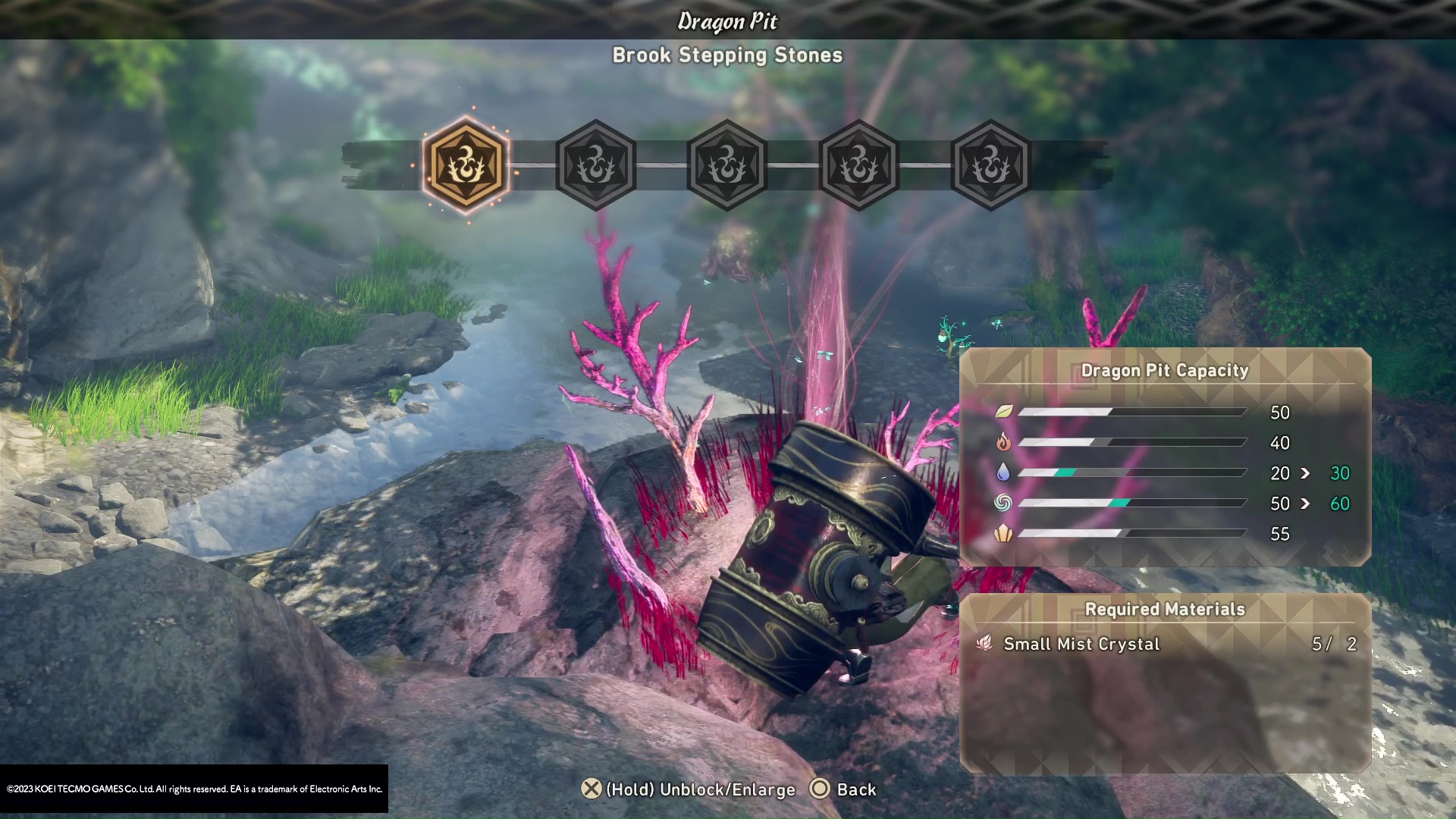
Every region in Wild Hearts has Dragon Pits, at which players can spend special crystals and gems to expand their resource pool for that island. Each Pit offers a specific combination of resources determined by where you find it - so a coastal Pit is probably going to offer a lot of Water, while a forest Pit will offer a lot of wood. All the Dragon Karakuri you build draw from this finite pool of resources, so make sure to spend some time to expand it! Between hunts, use the map to go to all the Dragon Pits across the region and buy what upgrades you can afford.
3. Eat food BEFORE combat because you can't during!
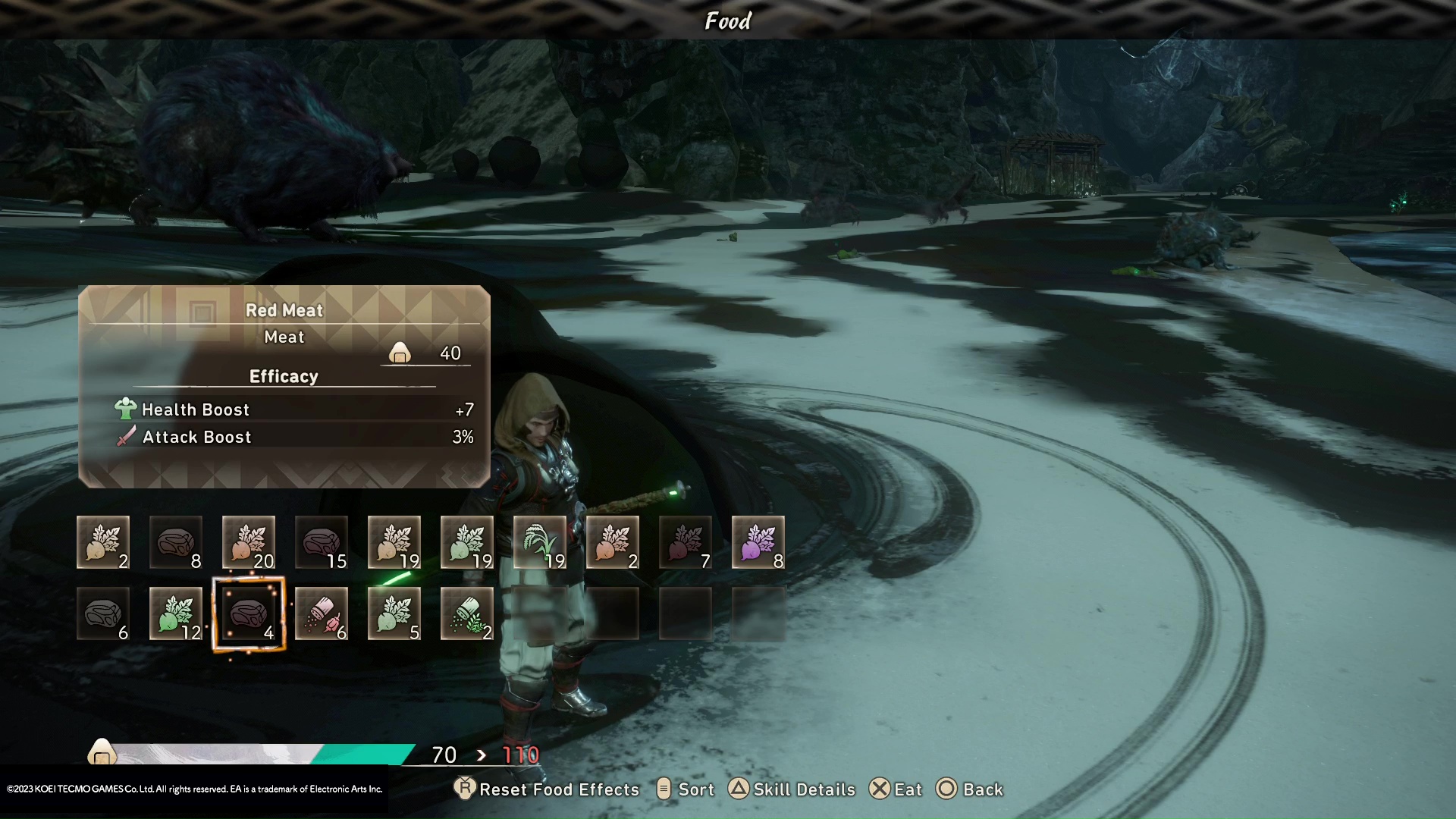
You'll likely pick up a lot of food along your journey - berries off plants, meat off smaller game, fish plucked from pools. This food can all be eaten for buffs (at least until you're too full to eat more), but make sure to do it before fighting a Kemono! The game doesn't let you chew on a banana mid-combat, locking you out of that option until the monster is either dead, or flees the fight to relocate to a new area. Eat in advance of the fight to get all the various buffs that your scavenged snacks should provide, or you might regret it! It's very easy to forget this advantage, especially considering how much food you can carry at once.
4. A Kemono's weaknesses should be considered both before and during the fight
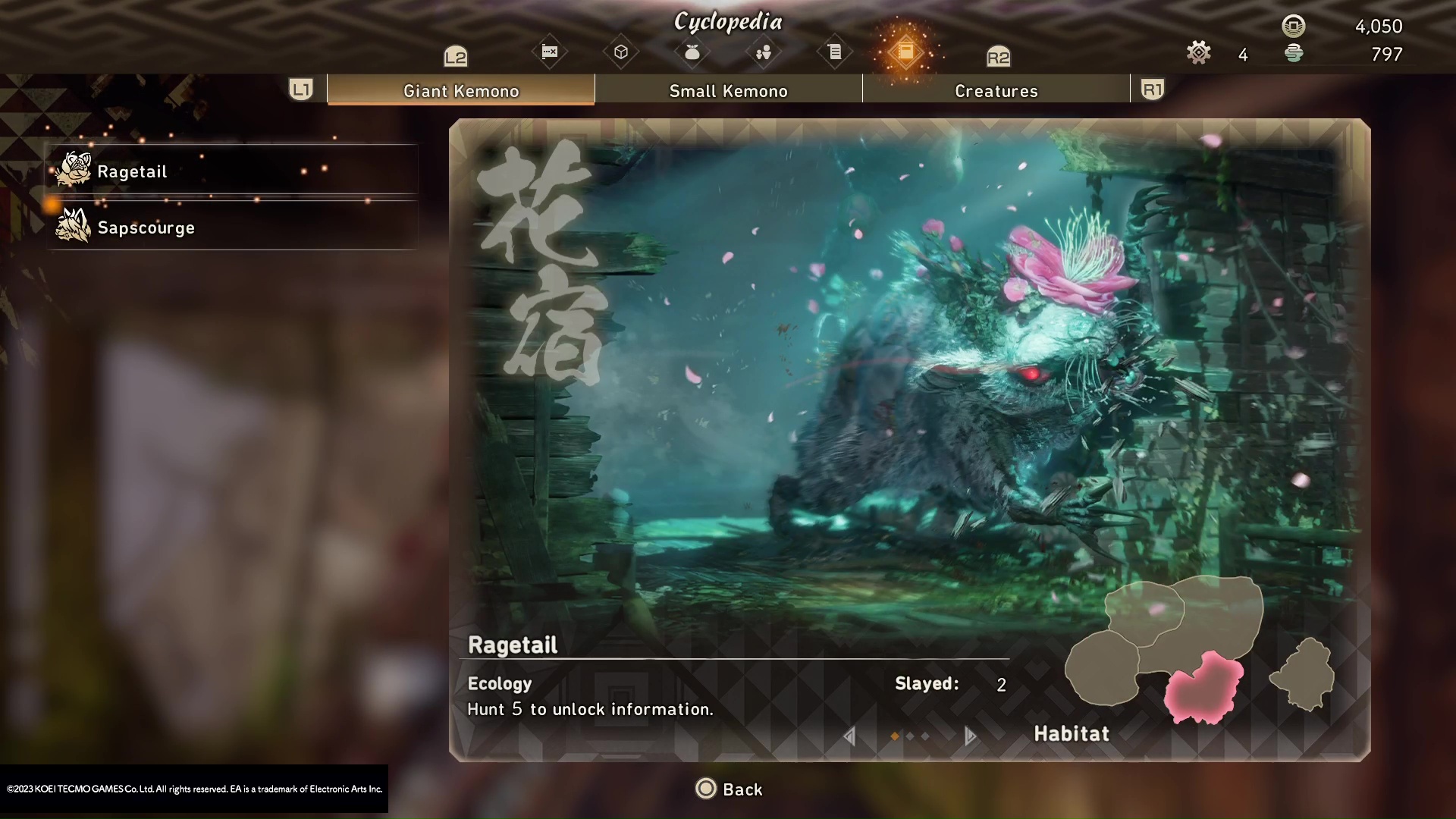
The monsters in Wild Hearts have weaknesses and resistances that drastically affect how your fight against them goes. These include the following:
- Physical/Weapon weaknesses (is it more hurt by a Maul's blunt damage than the piercing damage from a Wild Hearts Bow?)
- Attribute/Elemental weaknesses (Should you have your Wild Hearts weapons upgraded into fire, wind or water damage?)
- Ailment Effectiveness (Is it particularly easy to poison, burn or freeze this beast?)
- Part Softness (Is it better to hit the tail, body or head?)
You can check these elements in the Cyclopedia from the main menu, though a Kemono doesn't get an entry until you've fought it at least once. However, you can use them to prepare afterwards for rematches, building weapons to strategies to match. And once you're in the fight, target those Soft Parts, as well as the glowing blue Kemono weaknesses on its body - break the covering on those, and you can leap onto them and rip them out with your Hunter's Arm power.
Weekly digests, tales from the communities you love, and more
5. Build constantly in battle, but know your limitations
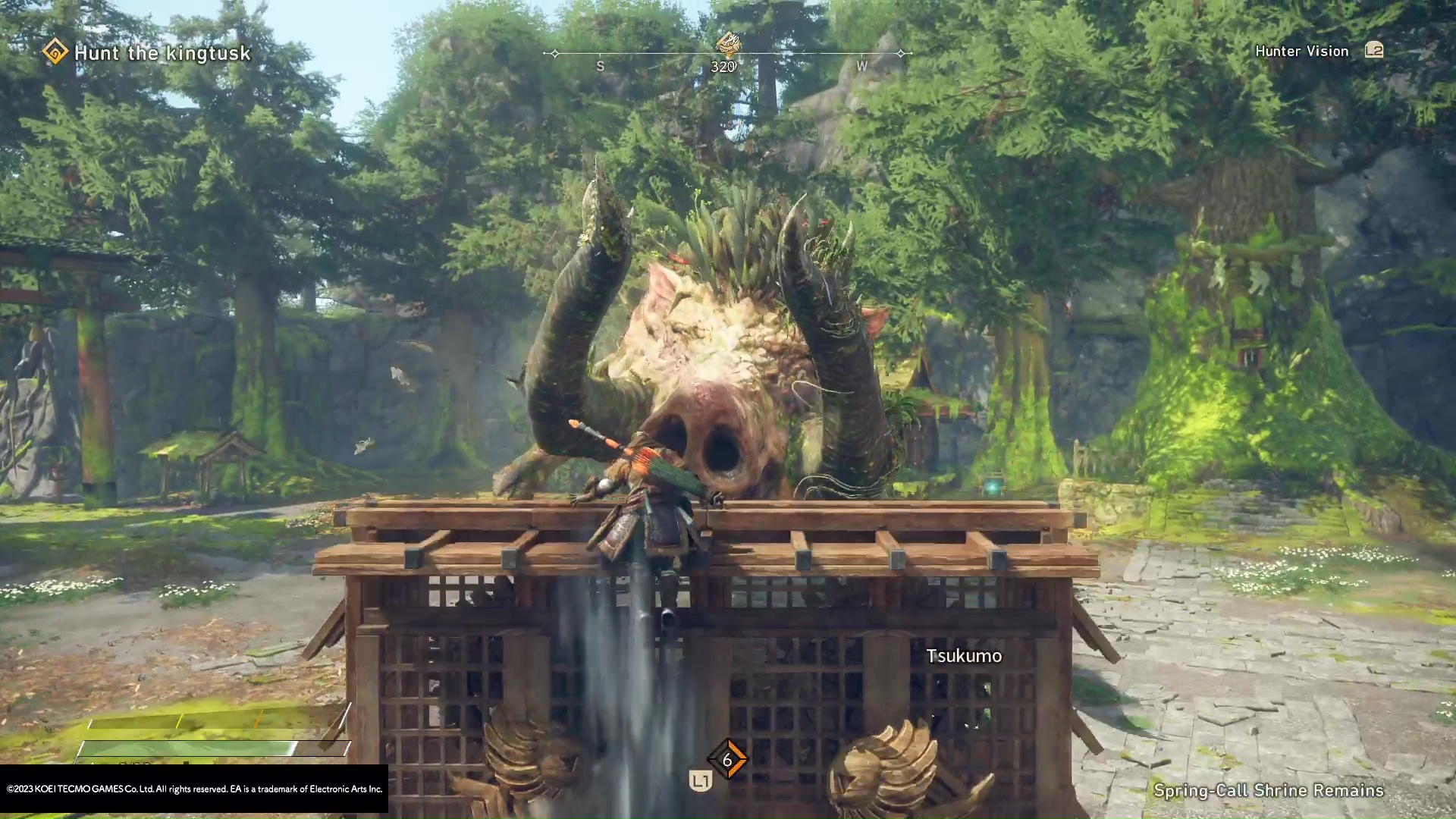
Your Basic Karakuri can be incredibly helpful in a fight, built in an instant (assuming you have the thread). Crates serve as chances to gain instant height, springs offer enhanced dodges and gliders give you aerial control. Then there's more complicated ones, like bulwarks and hammers, requiring a combination of Karakuri constructions mixed together. Learn the patterns to make them by heart, as later on more complex recipes will come into play - like explosives made from a Spring/Torch/Spring tower.
Not only that, but there's limitations in design - the hammer aims at where the Kemono was when you built it, rather than tracking its movements, for example. You should always be ready to build, especially the basic stuff, but remember that all these constructions have their downsides - and if nothing else, it's easy to run out of Thread!
6. Upgrade your Tsukumo friend regularly for more help
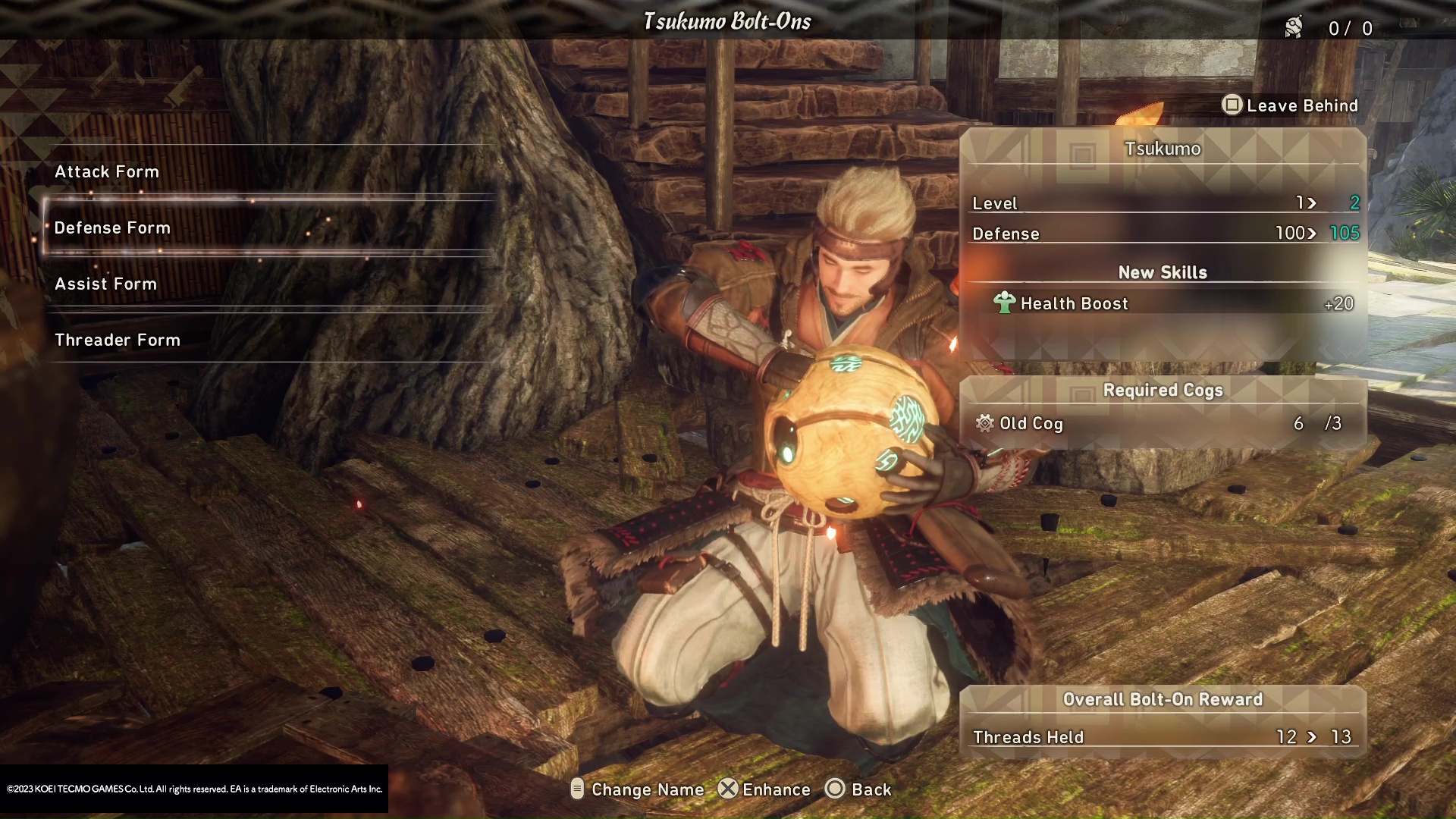
Your little Tsukumo is a robotic ball that follows you about and can be incredibly helpful if maintained. Tsukumo have a few abilities - they can distract enemies, do small amounts of damage, dispense healing mist and create Threads for the player to grab. These abilities can be upgraded at Campfires, but to pay for them you'll need Old Cogs, which are exclusively found by finding other Tsukomo in the wild (there's fifty hidden in each region). Each one you'll find will give you an Old Cog, and you can bring these back to the fire to make your own buddy a little more capable. Like Dragon Pits, it might be worth spending a little time between hunts to just go out and grab some Old Cogs from the wild around you.
7. Forge a mix of weapons and armor for different situations
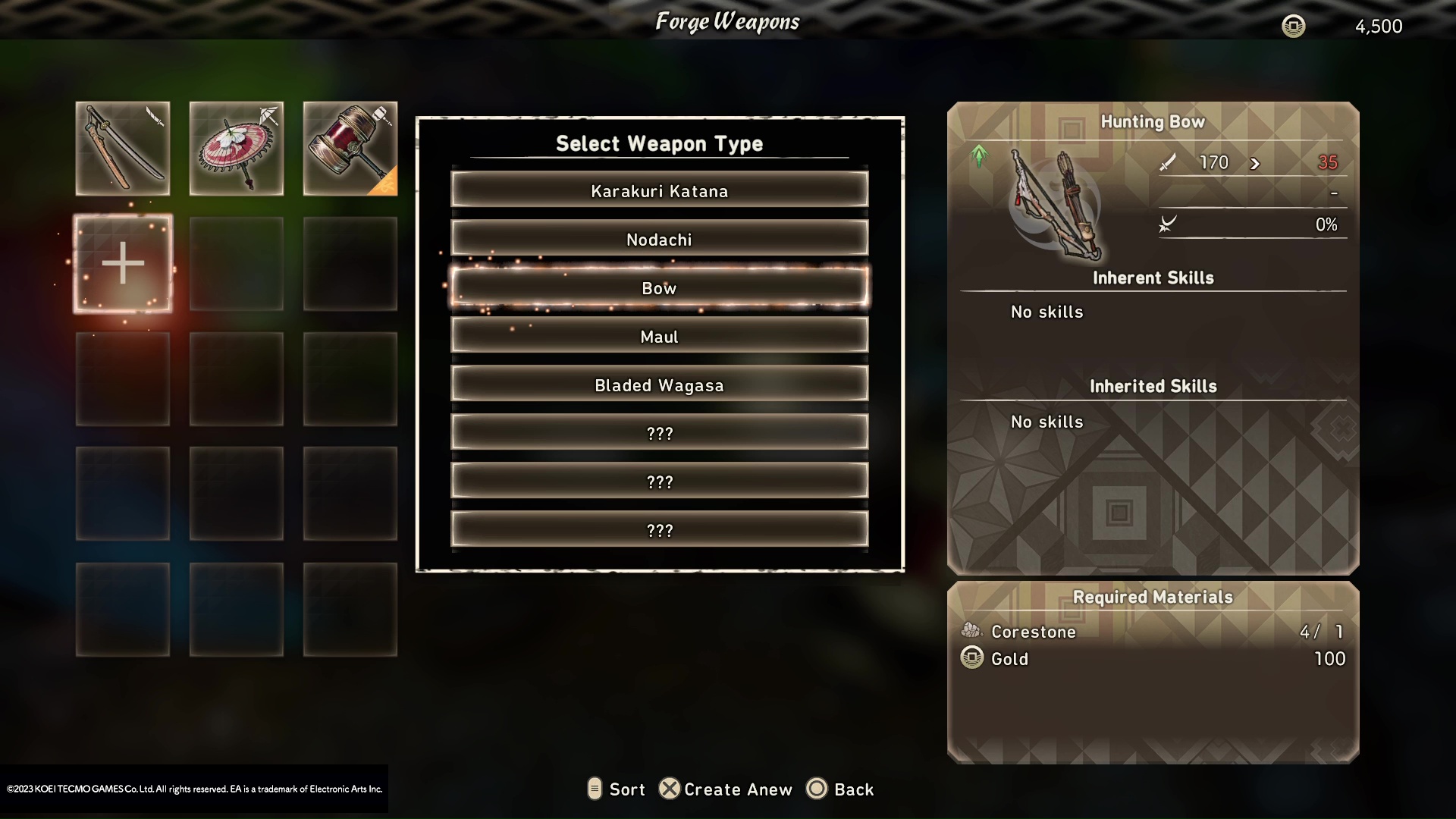
Building off our tip on weaknesses, you should have a variety of gear stored that you can pull out if needed over time. Weapons with different elements, armor with different resistances. This'll become easier to do later on in the game, as you encounter more monsters to craft from, but it's still a good practice, and definitely better than constantly breaking down and rebuilding a single weapon into different forms. Armor in particular will be a big element in later stages, with elemental resistances integral to surviving the game's nastier beasties.
8. Create a network of ziplines, towers and vortexes to make travel easier
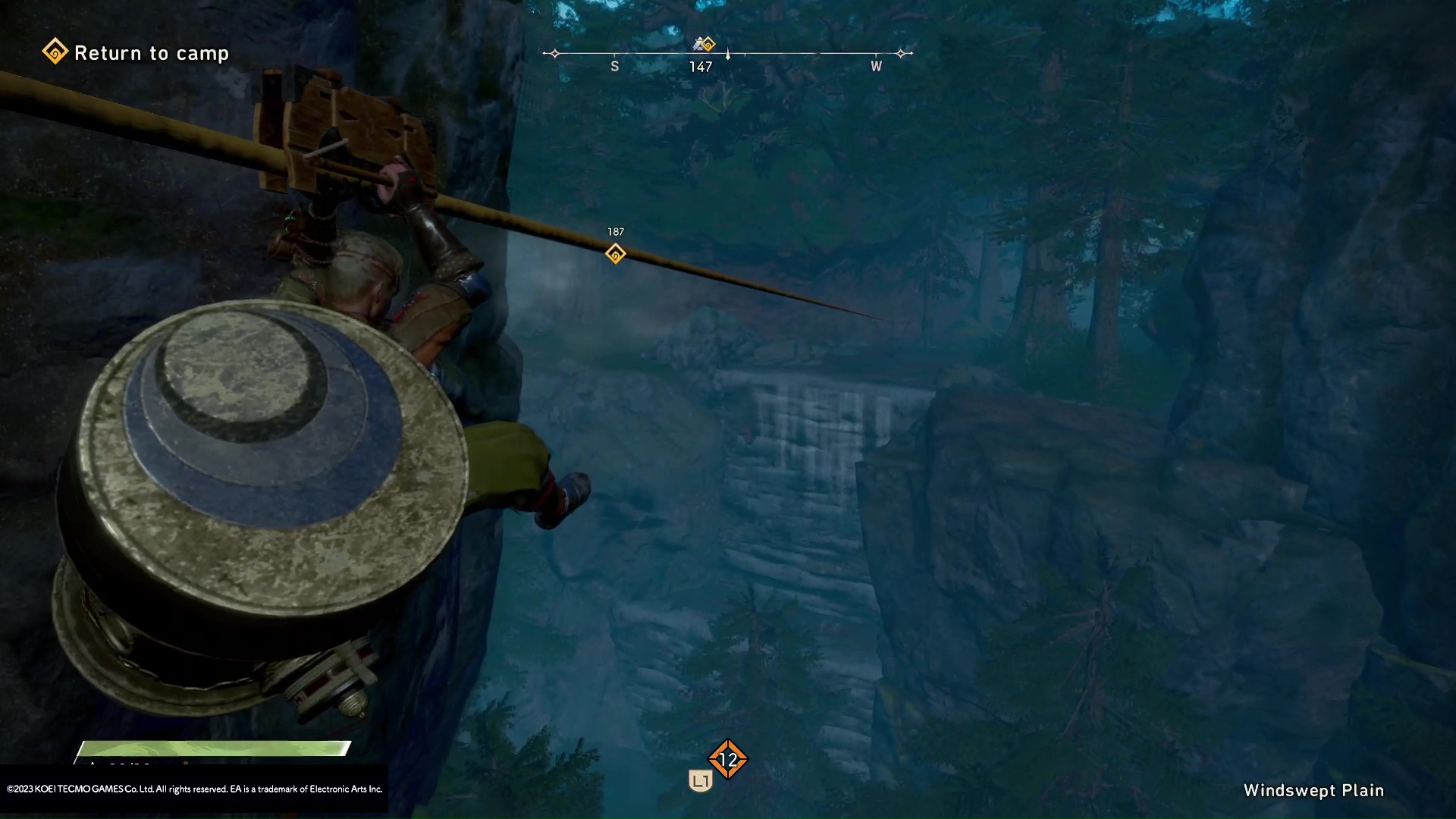
Because all your constructions hang around game-to-game, you can make travelling across a region a lot easier if you start building early on. Ziplines, launchers and wind vortexes will give you fast, expedient travel options, while Towers, Paddle Scoops and Forges will give you more options to prepare and harvest in advance of a big hunt. Similar to Death Stranding, you can create a whole interlinking system to get you around the world - and because it's all Dragon Karakuri, it'll rebuild itself if damaged.
9. Go back to Minato regularly for side quests and Fisherman Guild jobs
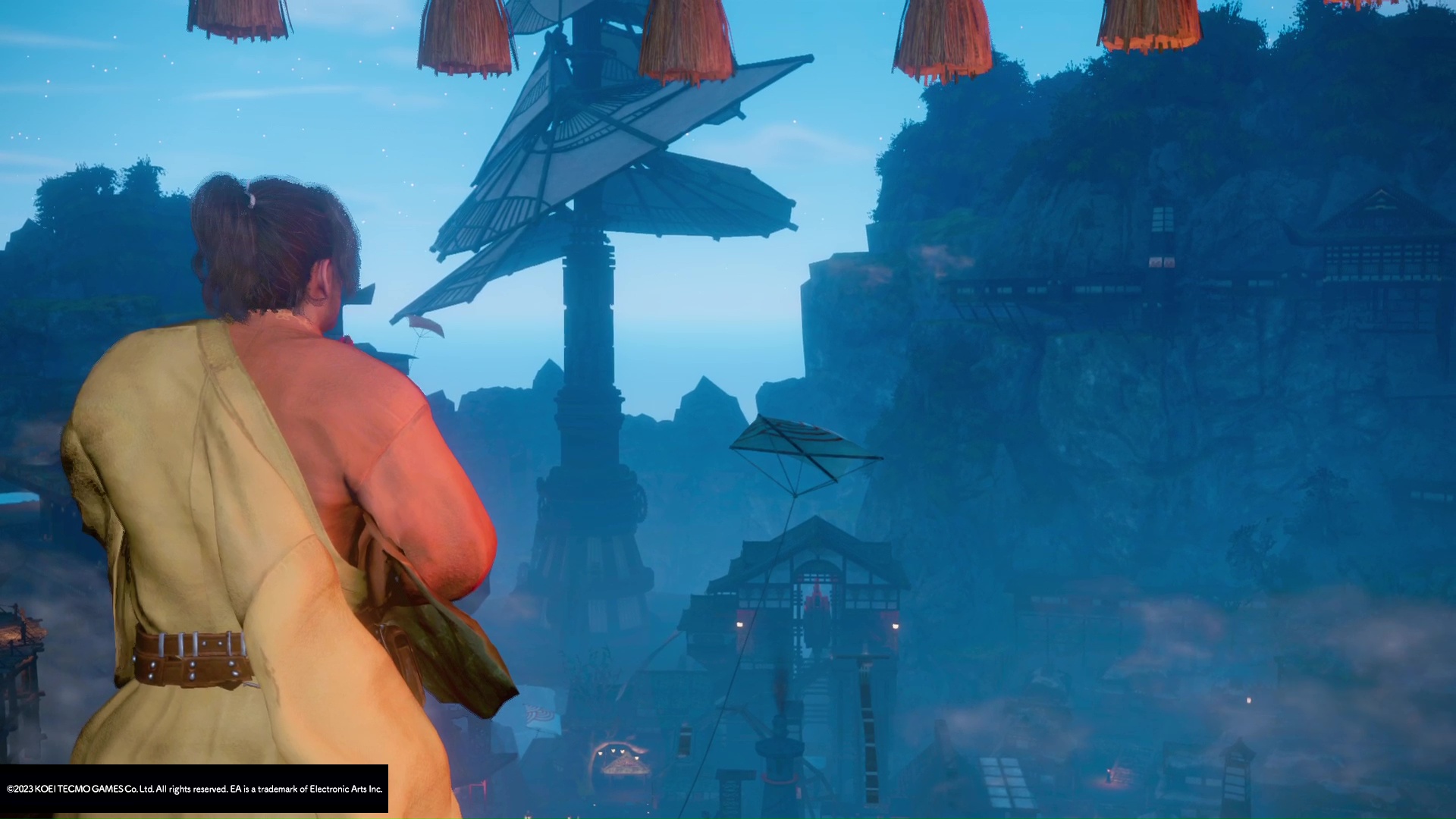
Minato - your hub town - has a lot to offer, but sometimes it's easy to forget that as you leap from one hunt into another, never leaving the wilderness. However, you should! There's a regular string of "Scrolls" (side quests) cropping up there, offering unique hunts and rewards, not to mention the Guild of Fisherman, which gives rewards for completing basic objectives. You should be coming back here after every two hunts at least, just to ensure you're getting the most out of your expeditions.
10. Multiplayer makes things (sort of) easier
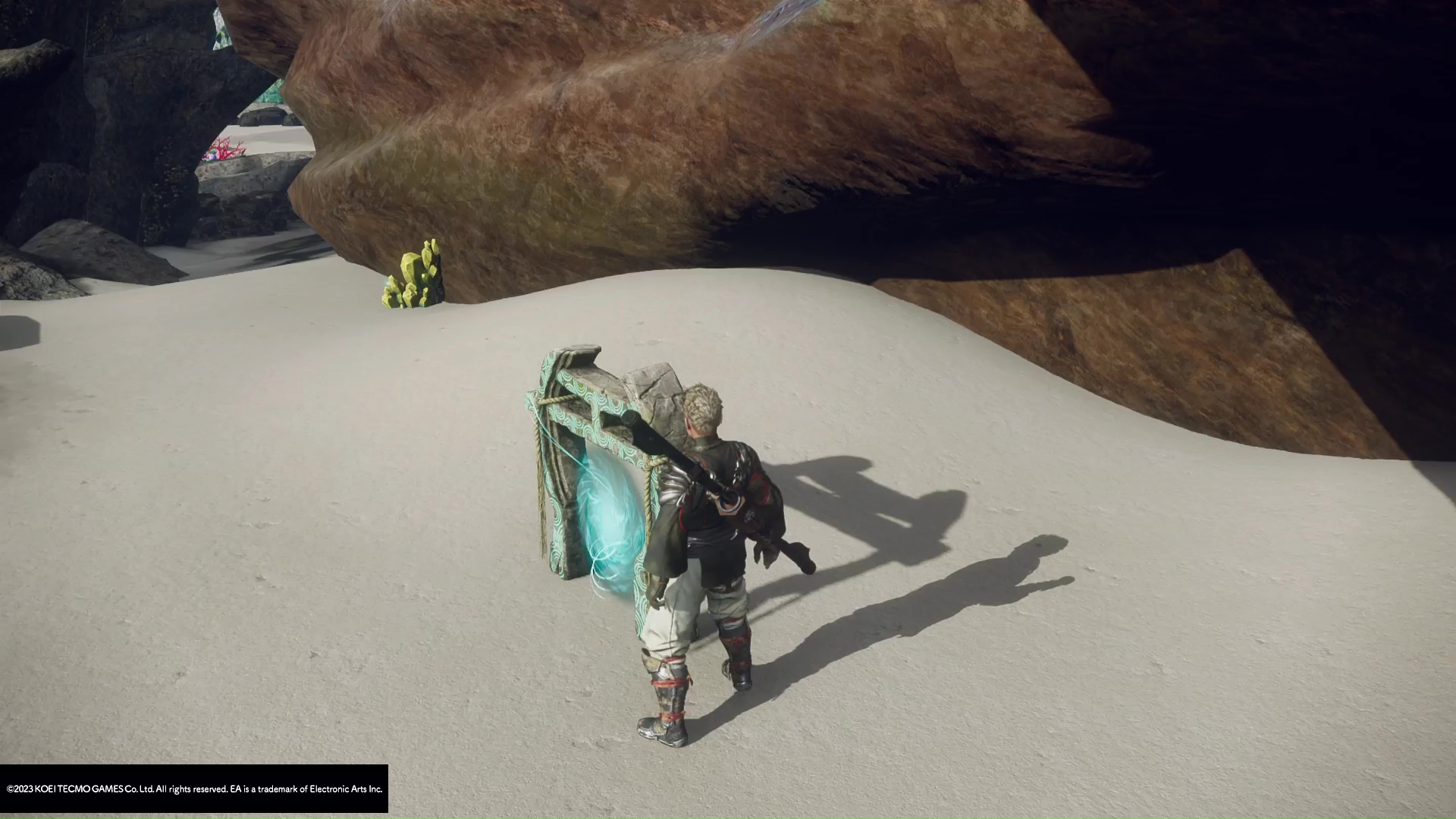
Wild Hearts multiplayer and online mode does shake things up - you lose access to your Tsukumo, and monsters get tougher to scale, but it allows for combined efforts that can make the deadliest Kemono a lot more manageable. If not everybody's pulling their weight, it can really sabotage the whole thing, but if everybody works together, it can make impossible hunts easy. It also gives ranged fighters, like those using the Wild Hearts Hand Cannon, a time to shine, as your allies draw the monster's focus off you and give you a chance to pick at it from a distance.

Joel Franey is a writer, journalist, podcaster and raconteur with a Masters from Sussex University, none of which has actually equipped him for anything in real life. As a result he chooses to spend most of his time playing video games, reading old books and ingesting chemically-risky levels of caffeine. He is a firm believer that the vast majority of games would be improved by adding a grappling hook, and if they already have one, they should probably add another just to be safe. You can find old work of his at USgamer, Gfinity, Eurogamer and more besides.


